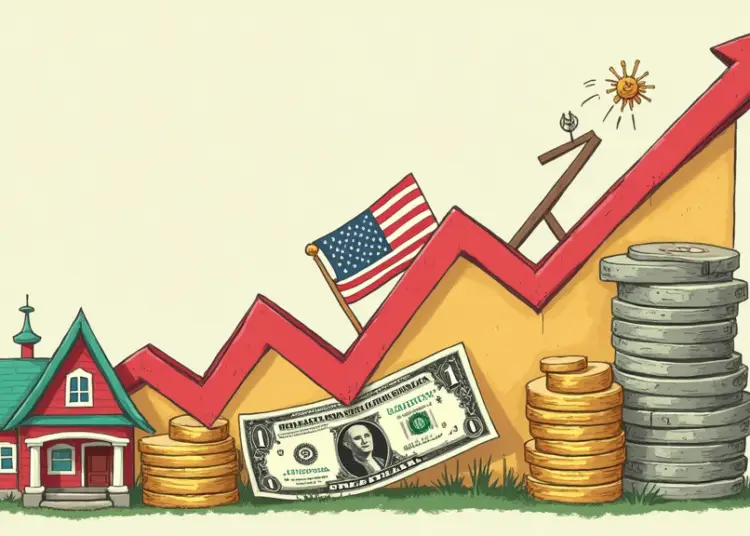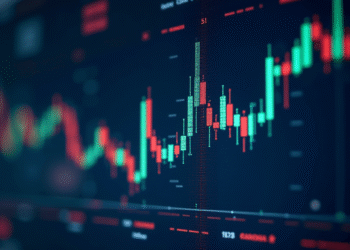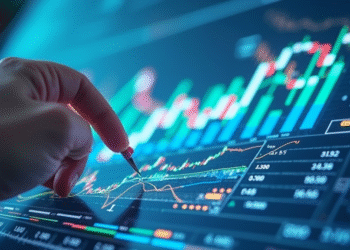The dollar index (DXY) has recently made headlines by rising 0.29% to reach a remarkable two-year high, driven by robust year-end demand. This surge is underscored by the yuan’s weakness, which has dropped to a 14-month low against the dollar, exacerbated by China’s disappointing manufacturing PMI data. As U.S. home prices in October exceeded expectations, the dollar’s strength continued to gain momentum. Additionally, the rising Treasury note yields have bolstered the dollar’s appeal, enhancing interest rate differentials that favor the greenback. With the EUR/USD pair experiencing a decline, the dollar’s ascent not only affects currency markets but also has implications for precious metals, which are often seen as safe-haven assets during economic fluctuations.
The dollar index, often referred to as the DXY, serves as a key indicator of the U.S. dollar’s strength against a basket of foreign currencies. Recently, this index has witnessed a notable increase, reflecting the dollar’s resilience in the face of global economic challenges. The depreciation of the yuan, combined with favorable U.S. housing market data, has contributed to the dollar’s upward trajectory. Furthermore, fluctuations in the EUR/USD exchange rate highlight the competitive landscape of international currencies. As investors navigate these dynamics, the interplay between the dollar index and commodities like gold and silver remains crucial, especially in light of ongoing geopolitical tensions.
The Dollar Index Reaches New Heights Amid Market Dynamics
The dollar index (DXY) has shown remarkable resilience, climbing by +0.29% to achieve a two-year peak. This surge can primarily be attributed to robust end-of-year demand and a significant drop in the Chinese yuan, which recently fell to a 14-month low against the dollar. The waning confidence in the yuan is linked to disappointing economic indicators from China, particularly the December manufacturing PMI, which registered a slight decrease, falling short of market expectations. As the yuan weakens, foreign investors tend to flock to the dollar, further propelling the dollar index upward.
Additionally, the positive momentum of the dollar index is bolstered by favorable U.S. economic data, notably in the housing market. October’s S&P CoreLogic composite-20 home price index surpassed forecasts, suggesting stability and growth in U.S. home prices. As long as the dollar maintains its strength, it could lead to increased investment flows into U.S. assets, creating a favorable cycle that supports the dollar index’s position against other currencies.
Impact of Yuan Weakness on Global Currency Markets
The recent depreciation of the yuan has significant implications for global currency markets, particularly concerning the dollar’s performance. As the yuan hits a 14-month low, the dollar becomes increasingly attractive to investors seeking stability, which only enhances the dollar index’s climb. The direct correlation between the yuan’s weakness and the dollar’s strength is evident, as traders often view the dollar as a safe haven during periods of uncertainty surrounding emerging market currencies.
Moreover, the yuan’s decline can trigger a series of reactions in the forex markets, particularly in the EUR/USD pair. As the dollar strengthens, the euro faces downward pressure, which was evident as the EUR/USD dropped to a one-week low. Market participants are adjusting their positions in anticipation of monetary policy shifts, particularly with the European Central Bank (ECB) signaling potential rate cuts. Thus, the yuan’s weakness not only impacts the dollar’s standing but also reshapes trading strategies across multiple currency pairs.
U.S. Home Prices: A Pillar of Dollar Strength
U.S. home prices have emerged as a critical factor in bolstering the dollar’s strength. The latest data shows that the S&P CoreLogic composite-20 home price index recorded an impressive month-over-month increase of +0.3% and a year-over-year rise of +4.2%, exceeding expectations. Such robust growth in home prices instills confidence in the U.S. economy, attracting foreign investment and supporting the dollar index’s rise. The housing market’s resilience is essential as it signals economic stability, which is crucial for maintaining the dollar’s appeal.
Furthermore, as home prices surpass forecasts, it raises expectations regarding future economic performance, which influences Federal Reserve policy decisions. Currently, markets are pricing in a relatively low probability of a rate cut, which could further enhance the dollar’s attractiveness as investors seek higher yields. As long as the U.S. housing market continues to show strength, it will likely provide a foundation for the dollar’s ongoing ascent in the face of global economic uncertainties.
The Influence of Treasury Yields on the Dollar
Treasury yields play a pivotal role in shaping the dollar’s value, particularly in relation to interest rate differentials. Following a period of early losses, Treasury note yields reversed course and began to increase, providing a significant boost to the dollar. Higher yields make U.S. assets more attractive to investors, which in turn drives up demand for the dollar. As the dollar index reached a two-year high, the link between rising yields and dollar strength was clearly illustrated, showcasing the importance of interest rates in currency valuation.
Moreover, the anticipation of future monetary policy adjustments by the Federal Reserve further complicates the relationship between yields and the dollar. With market participants speculating on potential rate cuts, the current environment of rising yields creates a unique dynamic that could influence trading strategies moving forward. As traders monitor these developments closely, the dollar’s performance will likely continue to reflect the interplay between Treasury yields and overall market sentiment.
EUR/USD Pair Dynamics Amid Dollar Strength
The dynamics of the EUR/USD pair have been significantly impacted by the recent strength of the dollar. As the dollar surged to new highs, the EUR/USD pair experienced a notable decline, dropping by -0.46% to reach a one-week low. This movement reflects the broader market sentiment, where the dollar’s strength is overshadowing the euro’s stability, particularly as European markets showed signs of weakness amid holiday trading. The liquidity constraints have exacerbated the volatility, leading to long liquidation in the euro as traders adjust their positions.
In the context of upcoming monetary policy meetings, the anticipation of potential rate cuts by the European Central Bank adds further pressure on the euro. With a 100% chance of a -25 bp rate cut at the next ECB meeting, traders are reevaluating their strategies, which often results in increased volatility in the EUR/USD pair. As the markets adjust to these signals, the outlook for the euro remains uncertain, heavily influenced by the dollar’s continued strength and the broader economic fundamentals.
Interplay of Precious Metals and Currency Strength
The performance of precious metals, particularly gold and silver, is intricately linked to the strength of the dollar. As the dollar index rose to a two-year high, precious metals faced downward pressure, reflecting the inverse relationship typically observed between the dollar and commodity prices. Despite a slight rise in gold prices, the overall environment of increasing Treasury yields and a strong dollar creates challenges for precious metals, as investors often turn to the dollar for stability and yield.
Additionally, geopolitical risks and market uncertainties usually drive safe-haven demand for precious metals. However, the recent mixed performance in the precious metals market indicates that while some investors seek refuge, many are also influenced by the dollar’s ascent. For instance, silver prices reacted negatively to disappointing manufacturing data from China, which could dampen demand for industrial metals. As the dollar continues to strengthen, the outlook for precious metals remains cautious, with traders closely monitoring economic indicators and market sentiment.
Market Sentiment and Stock Performance
Stock market performance has a profound impact on market sentiment, particularly in relation to safe-haven assets like precious metals. Following declines in the stock market, there has been an uptick in demand for safe-haven investments, as investors seek to mitigate risk. The recent market volatility, driven by geopolitical tensions and economic uncertainties, has led to increased interest in gold and silver as protective assets. However, as the dollar strengthens, the allure of equities may be overshadowed, influencing investor behavior.
Moreover, the interplay between stock market performance and currency strength cannot be understated. As stocks decline, the resilience of the dollar may attract more investors, which could lead to a further shift in market dynamics. This scenario emphasizes the need for investors to remain vigilant, as fluctuations in the stock market can create ripples throughout other asset classes, including currencies and precious metals.
Looking Ahead: Economic Forecasts and Dollar Trajectory
As we look ahead, economic forecasts suggest that the dollar’s trajectory will heavily depend on key indicators and central bank policies. Analysts are closely watching the upcoming FOMC and ECB meetings, where decisions on interest rates will shape market expectations. If the Federal Reserve signals a pause or potential cuts, it may impact the dollar’s strength, while any dovish moves from the ECB could further weaken the euro against the dollar. The interplay of these factors will be crucial for traders as they navigate the complexities of the forex market.
Additionally, U.S. economic data, particularly in housing and employment, will continue to play a significant role in influencing the dollar’s strength. As long as indicators remain robust and the dollar index remains elevated, it will likely attract foreign investment, reinforcing its position as a global reserve currency. The coming weeks will be critical as traders assess these developments and adjust their strategies accordingly, keeping a close eye on both domestic and international economic landscapes.
Geopolitical Tensions and Their Influence on Currency Markets
Geopolitical tensions often create ripples in currency markets, influencing investor sentiment and currency valuations. Recent events, including conflicts in Ukraine and the Middle East, have heightened market volatility, leading investors to seek safe-haven assets. In such scenarios, the dollar typically benefits as it is seen as a stable currency during times of uncertainty. The interplay between geopolitical developments and currency strength underscores the importance of monitoring global events that can shift market dynamics.
Furthermore, the impact of geopolitical tensions extends to commodities, particularly precious metals, which are often viewed as safe-haven investments. As tensions rise, demand for gold and silver tends to increase, providing a counterbalance to the dollar’s strength. However, as the dollar index reaches new heights, the performance of precious metals may become increasingly correlated with market sentiment rather than solely driven by geopolitical factors. Investors must remain aware of these complexities as they navigate the evolving landscape of currency markets.
Frequently Asked Questions
What factors contributed to the recent rise in the dollar index (DXY)?
The dollar index (DXY) rose by +0.29% recently, reaching a 2-year high due to strong year-end demand. Key contributors included the weakness of the yuan, which fell to a 14-month low against the dollar, and better-than-expected U.S. home prices, which increased by +4.2% year-over-year in October.
How does yuan weakness affect the dollar index?
Yuan weakness plays a significant role in the dollar index’s performance. As the yuan depreciates, it often leads to a stronger dollar index (DXY), as seen when the yuan hit a 14-month low against the dollar. This dynamic enhances the dollar’s attractiveness to investors.
What is the relationship between the dollar index and US home prices?
The dollar index (DXY) can be influenced by U.S. home prices. Recent data showed that U.S. home prices surpassed forecasts, recording a +4.2% increase year-over-year, which strengthened the dollar. Higher home prices often reflect a robust economy, boosting confidence in the dollar.
How did the EUR/USD pair react to the rising dollar index?
The EUR/USD pair dropped by -0.46%, reaching a 1-week low, largely due to the strengthening dollar index (DXY). The dollar’s rise led to long liquidation in the euro, especially during thin trading conditions as some European markets were closed for the New Year’s holiday.
What impact did Treasury note yields have on the dollar index and precious metals?
Treasury note yields rebounding from early losses contributed to the rise of the dollar index (DXY) by enhancing interest rate differentials. However, this led to downward pressure on precious metals as the dollar’s strength often diminishes their appeal as safe-haven assets.
What are the implications of the dollar index reaching a 2-year high for precious metals?
As the dollar index (DXY) hits a 2-year high, precious metals like gold and silver may experience mixed performance. While the dollar’s strength can exert downward pressure on metal prices, ongoing geopolitical risks maintain safe-haven demand for these assets.
How might future Federal Reserve rate cuts affect the dollar index?
Market expectations for future Federal Reserve rate cuts can influence the dollar index (DXY). Currently, there is an 11% probability of a -25 bp rate cut at the upcoming FOMC meeting. Such expectations can lead to fluctuations in the dollar’s strength and affect its overall performance.
What role does geopolitical risk play in the demand for the dollar index?
Geopolitical risks can elevate demand for the dollar index (DXY) as investors often seek safe-haven assets during times of uncertainty. Recent conflicts have led to increased safe-haven demand for the dollar, contributing to its rise.
| Key Points | Details |
|---|---|
| Dollar Index Performance | The dollar index (DXY00) rose by +0.29%, reaching a 2-year high. |
| Yuan Weakness Impact | The yuan fell to a 14-month low against the dollar, contributing to the dollar’s rise. |
| China’s Manufacturing PMI | China’s December manufacturing PMI decreased to 50.1, below expectations of 50.2. |
| U.S. Home Prices | October home prices rose +0.3% m/m and +4.2% y/y, exceeding forecasts. |
| Interest Rate Differentials | Treasury note yields reversed early losses, enhancing the dollar’s appeal. |
| EUR/USD Movement | EUR/USD dropped by -0.46%, hitting a 1-week low due to dollar strength. |
| JPY/USD Movement | USD/JPY increased by +0.33%, with the yen weakening amid subdued trading. |
| Precious Metals Performance | Gold rose by +0.87%, while silver fell by -0.58%. Mixed performance amid geopolitical risks. |
| Market Sentiment | Stock market declines boosted demand for safe-haven precious metals. |
Summary
The dollar index (DXY) has shown remarkable resilience, climbing to a 2-year high as demand surged towards the year’s end. This performance was fueled by a combination of factors including the weakening yuan, disappointing manufacturing data from China, and robust U.S. home price growth. As the dollar strengthens, it reflects broader economic trends and market sentiments, indicating potential shifts in monetary policy and investment strategies.













